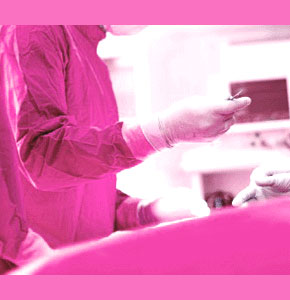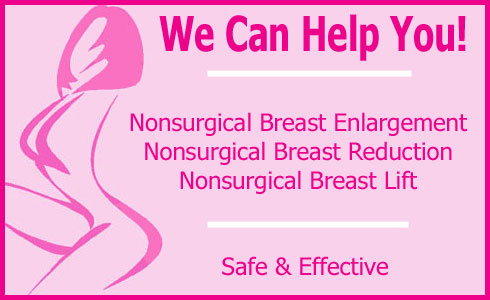
Iatrogenic cosmetic surgery is an unfortunate complication sometimes experienced by women who receive poor post-operative results. Iatrogenesis is a medical term which means that a negative condition of injury or disease is the direct or indirect result of a medical procedure or doctor’s mistake. In the cosmetic surgery industry, there are unfortunately many examples of iatrogenesis. Learning more about medical negligence will certainly help you to prevent problematic occurrences during your own proposed surgical procedure.
This article helps you to become proactive in your quest for safe plastic surgery.
General Examples of Iatrogenic Cosmetic Surgery
There are numerous examples of possible iatrogenesis in the cosmetic breast surgery industry. Cosmetic and plastic surgeries are invasive medical procedures, and as such, carry many common risks.
A good surgeon will always do everything possible to avoid potentially bad surgical results or injury to their patient, but these occurrences do occasionally happen.
Common iatrogenic scenarios include:
Infection can occur during any surgical procedure. Infection may be minor or life threatening. Infection can be the direct result of poor surgical technique, unhygienic conditions or post surgical contamination.
Surgical error might lead to injury, or even death, in some procedures. Patients might endure damage to nerve tissue, vascular tissue, muscular tissue or even an internal organ, which can leave temporary or permanent effects on the body.
Anesthetic-related difficulties can prevent the operation from being completed. Far worse is the chance for allergic reaction, collapse of the breathing passage, aneurysm, heart attack, coma or death.
Poor surgical results can span a wide range from not quite living up to expectations to obviously horrific and deforming. Some procedures can cause scarring or other complications to occur, which can ruin breast aesthetics. This damage might be correctable with additional surgeries or might be permanent.
Hematoma or seroma can often be caused by poor surgical technique. Improper treatment of these conditions can lead to lasting scarring or complications in the breast.
Careless surgical technique, or over-dissection, can cause neurological damage which might induce temporary or permanent loss of sensitivity in the breast or nipple. This might also affect the responsiveness of the nipple, making it unable to become firm and erect.
Careless surgical technique can cause a reduction or loss in breastfeeding ability, even if the procedure is not making cuts in the areola region.
Rare instances occur in which an operating tool is left inside the body after incision closure. This can lead to infection, ongoing pain or worse, depending on the nature of the implement and the anatomical location.
Damage to interior vascular tissue might cause ongoing internal bleeding, which might need to be surgically corrected by an additional operation.
Poor surgical technique can lead to tissue necrosis and can cause the loss of an entire breast, or even death, in very rare circumstances.
Abnormal or extensive scarring is possible with any surgical technique. These scars might be fixed with additional procedures or might be permanent.
During breast augmentation, poor surgical technique can contribute to the risk of developing capsular contracture. This can be very serious and might necessitate replacement or removal of the implants.
Other common iatrogenic complications which can occur during breast enlargement surgery include: double bubble, synmastia, bottoming out and implant rupture.
Preventing Iatrogenic Errors
The easiest way to prevent iatrogenesis during your cosmetic breast surgery is to choose your surgeon and procedure very carefully. Finding the best doctor, who will earn your trust with their knowledgeable words and exceptional results, is the primary criterion for achieving a desirable and complication-free surgical result.
Take your time when interviewing potential surgeons and keep your eyes open for any signs of poor performance or risky behaviors.
Make sure to inspect the surgical facility thoroughly and check for cleanliness and sanitary procedures.
When deciding on the best procedure, make sure that you are not creating a greater risk for yourself than need be. Always try to stay with the simplest and least invasive approach, which will accomplish your goals.
Try to minimize the time you spend under anesthetic, especially if you have any serious health problems or history of poor anesthetic reaction.
Be certain to give your doctor an extensive and honest health history, including any problems you have suffered in the past. Tell the doctor if you are on any medications or use drugs or alcohol regularly.
Most importantly, talk openly with your doctor about any concerns you have. Addressing these issues out loud will help to remind the surgeon of any special risks you might present.
Victims of Iatrogenic Cosmetic Surgery
Iatrogenesis during cosmetic surgery is a risk every woman takes during any operative breast procedure. While most cosmetic surgeons are excellent physicians and world class artists, there are some who are simply untalented, uncaring, unsafe and downright unprofessional. These doctors usually do not last long, since their poor results follow them throughout their medical careers.
Make sure to do everything in your power to prevent yourself from becoming a victim of breast surgery iatrogenesis. Learn the risks involved with your procedure and openly discuss these with your surgeon prior to your procedure. Ask the doctor what steps they can take to prevent each problematic occurrence.
If you hear anything at all which worries you, move on to another surgeon. Your body and your life are far too important to risk on some doctor who does not inspire your greatest confidence.




